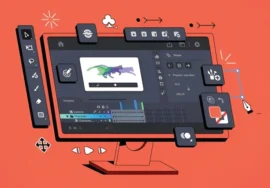
A Brief History of 3D Design: From Sketchpad to the Meta-verse
3D design, the art and science of creating three-dimensional digital models, has revolutionized industries ranging from architecture and engineering to gaming and film. This article delves into the fascinating history of 3D design, tracing its evolution from early conceptualizations to innovative technologies that shape our digital world.
The Dawn of 3D Design
The roots of 3D design can be traced back to the mid-20th century when pioneers like Ivan Sutherland began exploring the potential of computers to visualize and manipulate three-dimensional objects. Sutherland’s groundbreaking work on Sketchpad in 1963 laid the foundation for interactive computer graphics, allowing users to draw, edit, and manipulate simple shapes on a computer screen.
Early Developments and the Rise of CAD
The 1970s and 1980s saw significant advancements in 3D design technology. Computer-aided design (CAD) software emerged as a powerful tool for engineers and architects, enabling them to create precise and detailed 3D models of products and structures. Early CAD systems, such as AutoCAD and CATIA, revolutionized the design process, streamlining workflows and improving efficiency.
The 3D Renaissance: A New Era of Creativity
The 1990s marked a golden age for 3D design, fueled by the rapid growth of personal computers and the development of user-friendly 3D modeling software. Programs like 3D Studio Max and Maya empowered artists and designers to create realistic 3D animations and visual effects. The gaming industry, in particular, benefited from these advancements, as games like Doom and Quake pushed the boundaries of 3D graphics and immersive gameplay.
3D Printing: From Concept to Reality
The 21st century ushered in a new era of 3D design with 3D printing technology. This revolutionary process allows designers to create physical objects from digital 3D models, opening up endless possibilities for product prototyping, manufacturing, and personalized customization. 3D printing has democratized design, empowering individuals and small businesses to bring their ideas to life.
The Rise of Virtual and Augmented Reality
Virtual Reality (VR) and Augmented Reality (AR) have further expanded the horizons of 3D design. VR technology immerses users in virtual environments, while AR overlays digital information into the real world. These technologies have the potential to revolutionize industries such as architecture, healthcare, and education, providing immersive and interactive experiences.
The Future of 3D Design: AI, Machine Learning, and the Meta-verse
The future of 3D design is poised for even greater innovation, driven by advancements in artificial intelligence (AI), machine learning, and the emerging concept of the meta-verse. AI-powered tools can automate repetitive tasks, generate creative designs, and optimize 3D models. Machine learning algorithms can analyze vast datasets to find trends and patterns, enabling designers to make data-driven decisions.
The meta verse, a collective virtual shared space, is the next frontier of 3D design. It promises to blur the lines between the physical and digital worlds, enabling users to interact with 3D objects and environments in unprecedented ways.
The Impact of 3D Design on Various Industries
3D design has made significant inroads into various industries, reshaping the way products are designed, manufactured, and consumed. Here are a few key examples:
- Architecture and Engineering: 3D modeling software has revolutionized the way architects and engineers design buildings and infrastructure. Architects can create detailed 3D models to visualize the design, identify potential issues, and communicate their vision to clients. Engineers can use 3D modeling to simulate the performance of structures and systems, ensuring safety and efficiency.
- Automotive Industry: 3D design plays a crucial role in the automotive industry, from the initial concept stage to the final production phase. Designers can create virtual prototypes to explore different design options and evaluate their esthetics and functionality. Engineers can use 3D modeling to analyze the structural integrity and aerodynamic performance of vehicles.
- Gaming and Entertainment: The gaming and entertainment industries rely heavily on 3D design to create immersive and visually stunning experiences. 3D modeling and animation are used to create realistic characters, environments, and special effects. Virtual reality and augmented reality technologies, powered by 3D design, are transforming the way we interact with games and entertainment content.
- Healthcare: 3D design has made significant contributions to the healthcare industry. Medical professionals can use 3D models to plan complex surgeries, design custom prosthetics, and visualize medical conditions. 3D printing technology enables the creation of personalized medical devices and implants.
- Fashion and Retail: 3D design is reshaping the fashion and retail industry. Designers can create virtual garments and accessories to visualize different styles and combinations. 3D printing technology allows for the production of customized clothing and footwear. Virtual and augmented reality can enhance the shopping experience by allowing customers to try on clothes and accessories virtually.
Challenges and Future Trends
While 3D design has made remarkable progress, there are still challenges to overcome. One significant challenge is the complexity of creating realistic and accurate 3D models, particularly for complex objects and environments. Another challenge is the computational power required to render and manipulate large and detailed 3D models.
Despite these challenges, the future of 3D design is bright. Emerging technologies such as artificial intelligence, machine learning, and generative design are poised to revolutionize the field. AI-powered tools can automate repetitive tasks, generate creative designs, and optimize 3D models. Machine learning algorithms can analyze vast datasets to identify trends and patterns, enabling designers to make data-driven decisions. Generative design allows designers to specify design parameters and constraints, and then generate a variety of design options.
Conclusion
From its humble beginnings as a tool for engineers and architects to its ubiquitous presence in our daily lives, 3D design has come a long way. As technology continues to evolve, the future of 3D design holds immense promise, with the potential to transform industries, inspire creativity, and shape the way we interact with the world.





